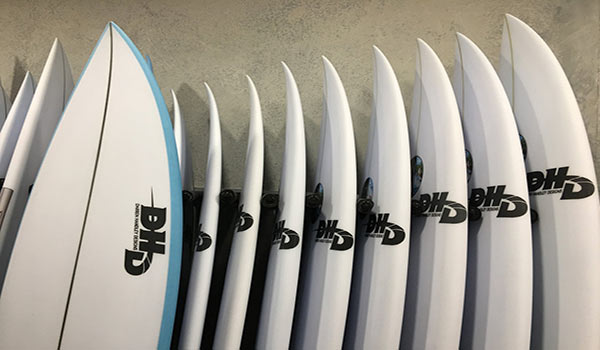
Australia is renowned for various magnificent landscapes, from fertile wine regions to snowy mountains that rival the Swiss Alps. Most notable, however, is the country’s over 10,000 pristine beaches. Did you know that it would take you 27 years if you were to visit one new beach in Australia a day?
Plenty of beaches in Australia are popular surfing spots such as Bells Beach, Noosa, and Byron Bay. People around the world call it a surf Mecca, a surfer’s pilgrimage, and more! A wave wonderland indeed, novice and experienced surfers flock to the country to get the best surfing experience.
When you’re planning your next surfing trip, you have to consider what board – or boards – you’re going to bring. You can rent or buy boards in some resorts, but surely you’ll want to take some of your DHD surfboards with you. Besides, bringing your own equipment eliminates having to feel out a new board. You can quickly get into the water and catch the waves with your board.
How many boards should I bring?
Experienced surfers say that the magic number for boards is three. Whether your trip is within Australia or in surfing spots in other countries, they advise that you bring more than one. Three surfboards will give you options on which board to use depending on the wave conditions.
Which boards should I pick?
The types of boards to bring generally depend on your surfing style or the beach’s usual wave conditions of the place you’re going to. You need to bring your standard go-to surfboard, of course. This surfboard is the one you use the most and works almost like an extension of your body.
The other two types of boards are a smaller surfboard and a step-up or a larger board. Of course, these options may change depending on your surfing intent. For instance, you would like to practice surfing more on this trip. Then, you should bring a longboard with you. Longboards catch more waves than other types of boards, so it will guarantee you more chances to upskill.
If you’re an intermediate and more experienced, you may want to bring short or hybrid surfboards. They may look smaller or lighter, but they are actually wider and thicker. These versatile boards enable you to surf varying conditions of waves. All in all, be realistic in your surfing abilities so you can ensure all the boards you bring are worth carrying around the whole trip.
What if I can only bring one board?
If there are constraints on your travel, you’re probably allowed to bring only one surfboard. In that case, you have to find an all-rounder that compromises the different capacities of various surfboard styles.
To pick an all-rounder, look for surfboard designs with round tails or pins. These curves work with a broad range of wave conditions. A balanced tail rocker will keep you balanced in smaller surf and larger waves too. You can look into DHD surfboards for all-round surfboards like these.
To summarize, it would be best to spend a little time choosing what boards to bring on a surfing trip. If there’s no issue with travel or finance, bring at least three boards with you. If there will be some limits on the trip, choose a reliable all-rounder. Also, secure other gears like surfboard wax, sunscreen, swimwear, extra fins, leash, and more. Bringing the right equipment will ensure smooth travel and a memorable surfing experience.


